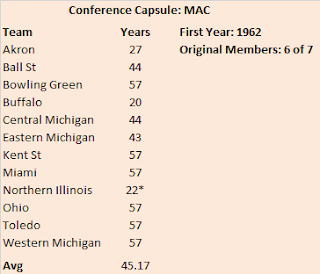Last week we looked at how Conference USA teams fared in terms of yards per play. This week, we turn our attention to how the season played out in terms of the Adjusted Pythagorean Record, or APR. For an in-depth look at APR, click here. If you didn’t feel like clicking, here is the Reader’s Digest version. APR looks at how well a team scores and prevents touchdowns. Non-offensive touchdowns, field goals, extra points, and safeties are excluded. The ratio of offensive touchdowns to touchdowns allowed is converted into a winning percentage. Pretty simple actually.
Once again, here are the 2018 Conference USA standings.
And here are the APR standings sorted by division with conference rank in offensive touchdowns, touchdowns allowed, and APR in parentheses. This includes conference games only with the championship game excluded.
Finally, Conference USA teams are sorted by the difference between their actual number of wins and their expected number of wins according to APR.
I use a game and a half as a line of demarcation and by that standard, no team significantly exceeded their APR. Two teams did finish at least a game and a half below their APR, but Florida Atlantic and UTEP also failed to live up to their expected record based on YPP and we went over some reasons why last week.
The Shifting Membership of Group of Five Conferences
Over the past decade or so, conference affiliation has been fluid. Massive realignment shifts at the top level of college football have caused significant aftershocks at the lower levels of the sport. Look no further than Conference USA for evidence of this. Despite barely being old enough to drink (the league began playing football in 1996), only one of the original six founding members is still in the conference. With that in mind, I decided to see just how stable conference membership is at the Group of Five level. Is Conference USA unique in its shifting membership or is this par for the course for the other mid-major conferences? To find out, I looked at the current (football playing) makeup of the four senior Group of Five conferences (I ignored the American as it was only founded in 2013) and calculated how many years the average team had been a continuous member as well as how many of the original members were remaining. I’ll go through each conference one by one starting with the most stable (defined as having the longest tenured average member).
Founded in 1962, the MAC is easily the oldest mid-major conference and has by far the longest-tenured average member. Nine of the twelve teams have been in the conference for at least forty years and all twelve have spent at least two decades as a member of the Big 10’s little brother. Note that the average membership length would be even greater if I included both tenures of Northern Illinois. The Huskies joined the MAC in 1975 and played for eleven seasons before leaving after the 1985 campaign. They were vagabonds for another eleven season, playing as an independent and as a member of the Big West before rejoining the MAC in 1997. Also note that six of the original seven MAC teams are still in the conference. Marshall was a founding member of the conference in 1962 and stayed for eight season before becoming an independent in 1970. The Herd later rejoined (and dominated) the MAC when they made the jump from I-AA (now FCS) in 1997.
Finishing with an average membership length merely three decades short of the MAC’s, the Mountain West is up next. The conference will be celebrating its 20th anniversary in 2019 and six of the original eight founding members are still there. The other two, TCU and Utah, moved up to Power Five conferences several years ago. Outside of those original six, the other half of the conference is filled with relative newcomers. Boise joined in 2011, Fresno State, Hawaii, and Nevada joined in 2012, and San Jose State and Utah State rounded out the membership in 2013.
The Sun Belt began sponsoring football in 2001, but only three of the original seven members are still in the conference. Idaho now plays football at the FCS level while New Mexico State has been banished to the waste land of independent football and Middle Tennessee and North Texas are now members of Conference USA. The Sun Belt has served as a landing spot for teams looking to get a slice of that FBS money. Appalachian State, Coastal Carolina, Georgia Southern, Georgia State, South Alabama, and Texas State have all either moved up from the FCS or started their football programs from scratch in the past decade.
Southern Miss is the elder statesman of Conference USA. The other five founding members are all in the ACC (Louisville) or the American (Cincinnati, Houston, Memphis, and Tulane). Outside of Southern Miss, only four other teams have been in the conference more than a decade (Marshall, Rice, UAB, and UTEP). The other members either graduated from the Sun Belt (FAU, FIU, Middle Tennessee, North Texas, and Western Kentucky), escaped the WAC before it imploded (Louisiana Tech and UTSA), or started their football programs in the last decade (Charlotte, Old Dominion, and UTSA again).
Despite being the second-oldest surviving mid-major conference (RIP WAC), Conference USA is the second youngest in terms of average length of membership (behind the six-year old American). Will the conference survive another round of realignment or become a footnote in history like its spiritual predecessor, The Metro? Only time will tell.







No comments:
Post a Comment